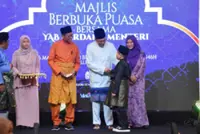RATED at 69.6%, verbal communication was the second most important attribute cited by employers when asked what they wanted to see on graduates’ resumes, according to the National Association of Colleges and Employers 2022 report.
While the Roadmap for English Language Education 2015-2025 stresses the importance of proficiency, it cannot be emphasised enough that English as a Second Language (ESL) learners in Malaysian tertiary institutions must possess excellent verbal communication skills if we are to achieve the high-quality higher education envisioned in the United Nations Sustainable Development Goal 4.
Sadly, input from our nation’s leaders, industry players and the media indicates that tertiary learners still struggle with their verbal communication skills.
Employers have also lamented that ESL graduates were turned away because they could not perform well in job interviews.
According to previous studies, challenges include a lack of learning engagement and interaction between learners and other members of the learning community, such as instructors and peers, as well as the unwillingness of ELS learners to communicate in English.
As scholars have noted that neither face-to-face nor online learning has been effective in tackling verbal communication problems among ESL learners, most tertiary institutions have implemented blended learning for ESL education, particularly for teaching verbal communication.
A combination of face-to-face and online learning, the blended approach aligns with the Malaysia Education Blueprint 2015-2025, which emphasises technology integration in teaching and learning.
This approach integrates face-to-face instruction with technologies such as virtual reality, artificial intelligence, learning management systems, massive open online courses, and social media applications.
The use of a blended approach, particularly for teaching verbal communication in ESL classrooms, allows educators to apply innovative and interactive methods that cater to different types of learners, such as visual, auditory and kinaesthetic learners.
Blended learning is also beneficial for ESL learners as it facilitates greater engagement.
Various interactive learning techniques increase students’ willingness to communicate in English while enhancing interaction between students and educators.
DR SANGEETH RAMALINGAM
Dean/Senior lecturer
Faculty of Education, Social Sciences and Humanities
Universiti Poly-Tech Malaysia




































